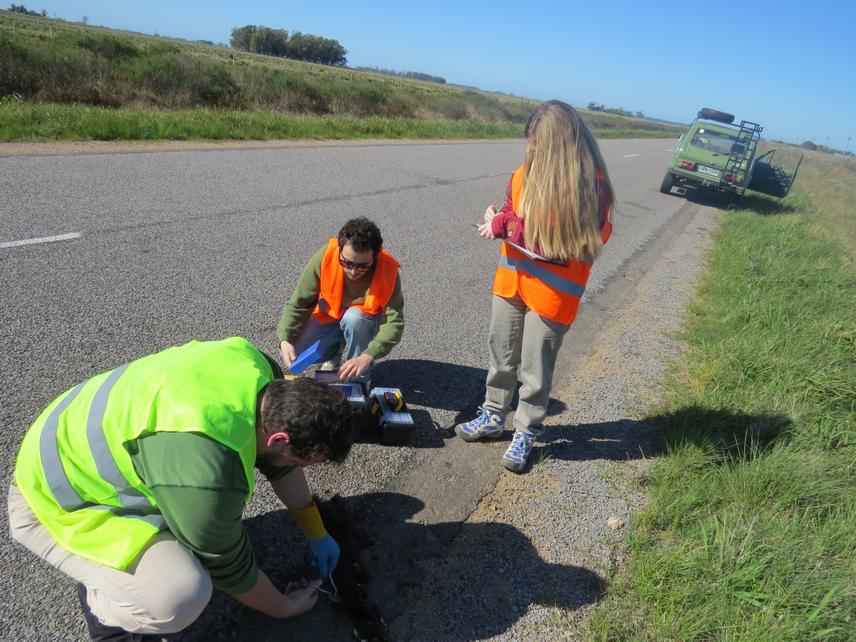Hugo Ignacio Coitiño Banquero
Other projects
29 Aug 2008
Species Richness and Conservation Status of Medium and Large Mammal Populations in the Protected Area Quebrada de los Cuervos, Uruguay
14 Dec 2020
Monitoring of Mitigation Measures Implemented in Uruguay to Reduce the Impacts of the Roads on the Populations of Medium and Large Mammals
This project aims to assess the impact of roads on mammal populations in eastern Uruguay and generate a monitoring network with schools

Removal of animals on route.
In recent decades the negative effects of roads on biodiversity has intensified due to an increase in the number of vehicles in circulation, a global trend also observed in Uruguay. As a consequence, research has been carried out in several countries that verify the impact of roads on mammal populations, this produces certain impacts such as lowering the quality of habitats, habitat fragmentation, border and barrier effects, changes in reproductive behaviour and high collision mortality, among others. In Uruguay there is no information available on this issue, except for a punctual study made in 1997 where approximately 1800 dead mammals were counted along a route parallel to the Uruguayan coastline. This indicates the problem is also present in Uruguayan roads, and therefore, this reality should be a cause for concern for proper authorities. It is important to begin studying these issues in Uruguay to gather base line information which will allow the elaboration of management plans and mitigation measures for the impacts of roads on biodiversity.
Because this is that this project has the objective of gathering baseline information about the impacts roads have on biodiversity, and contributing to the conservation of medium-sized and large mammal species in Uruguay. The information obtained in the project will allow the identification of those species most affected by collisions, high mortality areas and if they increase in any given seasons of the year (reproductive or non-reproductive season). This would indicate the spatial and temporal variation of mortality on roads. This will also allow the proposal of measures to reduce collision mortality of these species; to create a long term monitoring program; to identify if these impacts affect species with conservation problems at a national and global scale to inform the SNAP (National Protected Areas System); to provide society with information about the importance of biodiversity and what people can do to minimize biodiversity loss on roads; and to gather information for the development of management guidelines that can be implemented as measures for road environmental impact studies.